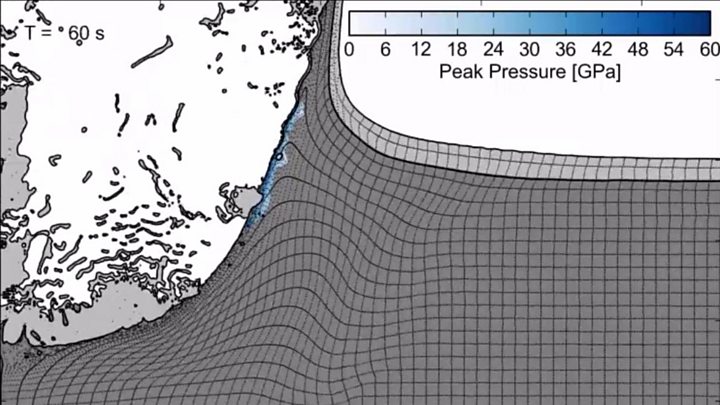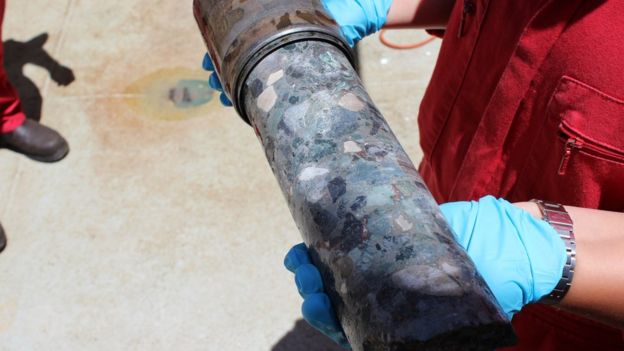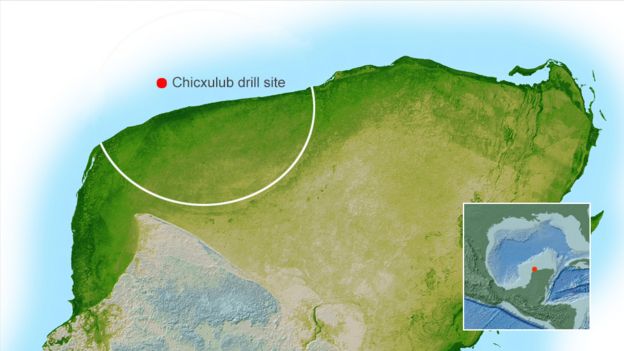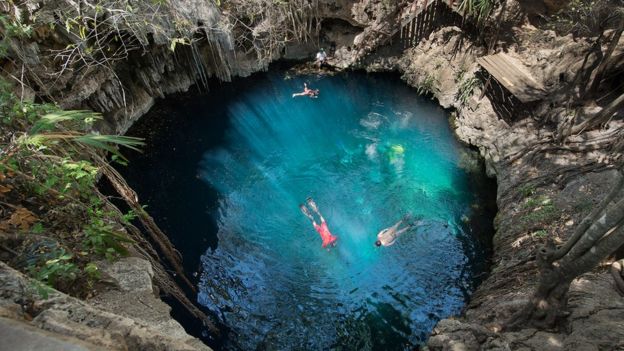29.10.2018
 Image copyrightBARCROFT PRODUCTIONS/BBC
Image copyrightBARCROFT PRODUCTIONS/BBC
It is hard to imagine billions of tonnes of rock suddenly start to splosh about like a liquid - but that is what happened when an asteroid struck the Earth 66 million years ago.
Scientists have now put together a detailed picture of the minutes following the giant impact.
This, remember, is the colossal event that wiped out the dinosaurs.
The analysis of rocks drilled in 2016 from the leftover crater show they underwent a process of fluidisation.
The pulverised material literally began to behave as if it were a substance like water.

Models had predicted what should happen when a 12km-wide stony object from space punched the ground.
Initially, a near-instantaneous bowl would have been created some 30km deep and up to 100km wide.
Then, instabilities would have seen the sides collapse inwards and the base of the hole rebound skyward, briefly reaching higher than the Himalayas.
When everything had settled down, a crater roughly 200km wide and 1km deep would remain.
This is the feature that is now buried under sediments in the Gulf of Mexico, close to the port of Chicxulub.
The impact description - scientists call it the dynamic collapse model of crater formation - is only possible if the hammered rocks can, for a short period, lose their strength and flow in a frictionless way.
And it is the evidence for this fluidisation process that researchers now report after studying the rocks they drilled from something called the "peak ring" - essentially, a circle of hills in the centre of the remnant Chicxulub depression.
 Image copyrightDSMITH@ECORD
Image copyrightDSMITH@ECORD
"What we found in the drill core is that the rock got fragmented. It was smashed to tiny little pieces that initially are millimetre sized; and that basically causes this fluid-like behaviour that produces in the end the flat crater floor, which characterises Chicxulub and all such large impact structures, including those we also see on the Moon," explains Prof Ulrich Riller, from the University of Hamburg, Germany.
This is not rock being melted; rather, it is rock being broken apart by immense vibrational forces, says Prof Sean Gulick, the drill team co-lead from the University of Texas at Austin, US.
"It is a pressure effect; it's mechanical damage. The amount of energy moving through these rocks is equivalent to Magnitude 10 or 11 earthquakes; the estimate for the whole impact is something like 10 billion Hiroshima bombs."
Ultimately, the rocks will regain their strength. They have to if they are to build the ring of hills.
This return of rigidity, again, is witnessed in the drill core samples.
Chicxulub Crater - The impact that changed life on Earth
 Image copyrightNASA
Image copyrightNASA
- A 12km-wide object dug a hole in Earth's crust 100km across and 30km deep
- This bowl then collapsed, leaving a crater 200km across and a few km deep
- The crater's centre rebounded and collapsed again, producing an inner ring
- Today, much of the crater is buried offshore, under 600m of sediments
- On land, it is covered by limestone, but its rim is traced by an arc of sinkholes
 Image copyrightMAX ALEXANDER/B612/ASTEROID DAY
Image copyrightMAX ALEXANDER/B612/ASTEROID DAY
"It is manifested in what we call shear fractures - planar discontinuities where rocks can slide past each other," Prof Riller added. "We see these fractures over-printing the smashed rocks that formed beforehand. These planar structures are evidence that the rock must have regained strength towards the end of crater formation."
As well as bringing new insights into one of the most catastrophic days in Earth history, and the mass extinction that followed - the Chicxulub investigation will also help scientists as they study big impact craters on other planetary bodies.
"We are explaining a fundamental process that will occur on any rocky body," says Prof Gulick.
"For the first time ever, we now have rocks that tell us the kind of deformation they've undergone to temporarily behave like a liquid and then become like a rock again at the end - without melting. It's all done by overlapping deformation mechanisms. This will be a fundamental process that resurfaces planets, not just in our Solar System but presumably in all Solar Systems."
Profs Riller and Gulick were part of the Expedition 364 drilling project, which was conducted in April/May 2016 under the auspices of the European Consortium for Ocean Research Drilling (ECORD) and the International Ocean Discovery Program (IODP).
Their latest findings on "acoustic fluidisation" in the Chicxulub crater are published in the journal Nature.
Quelle: BBC
